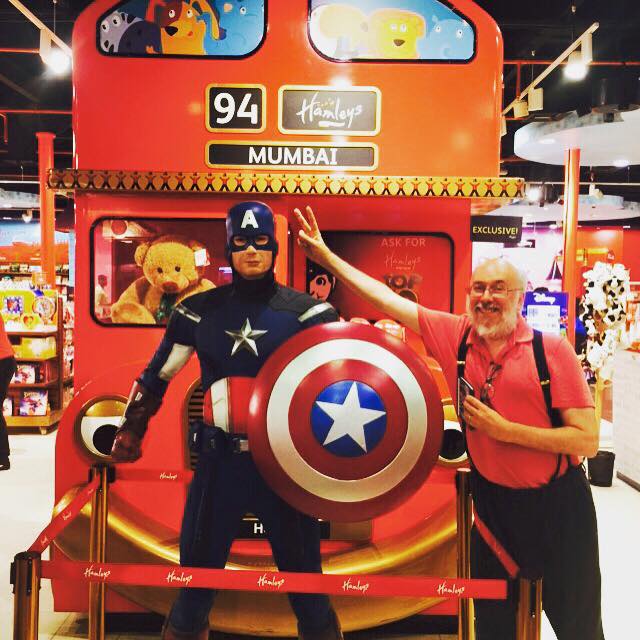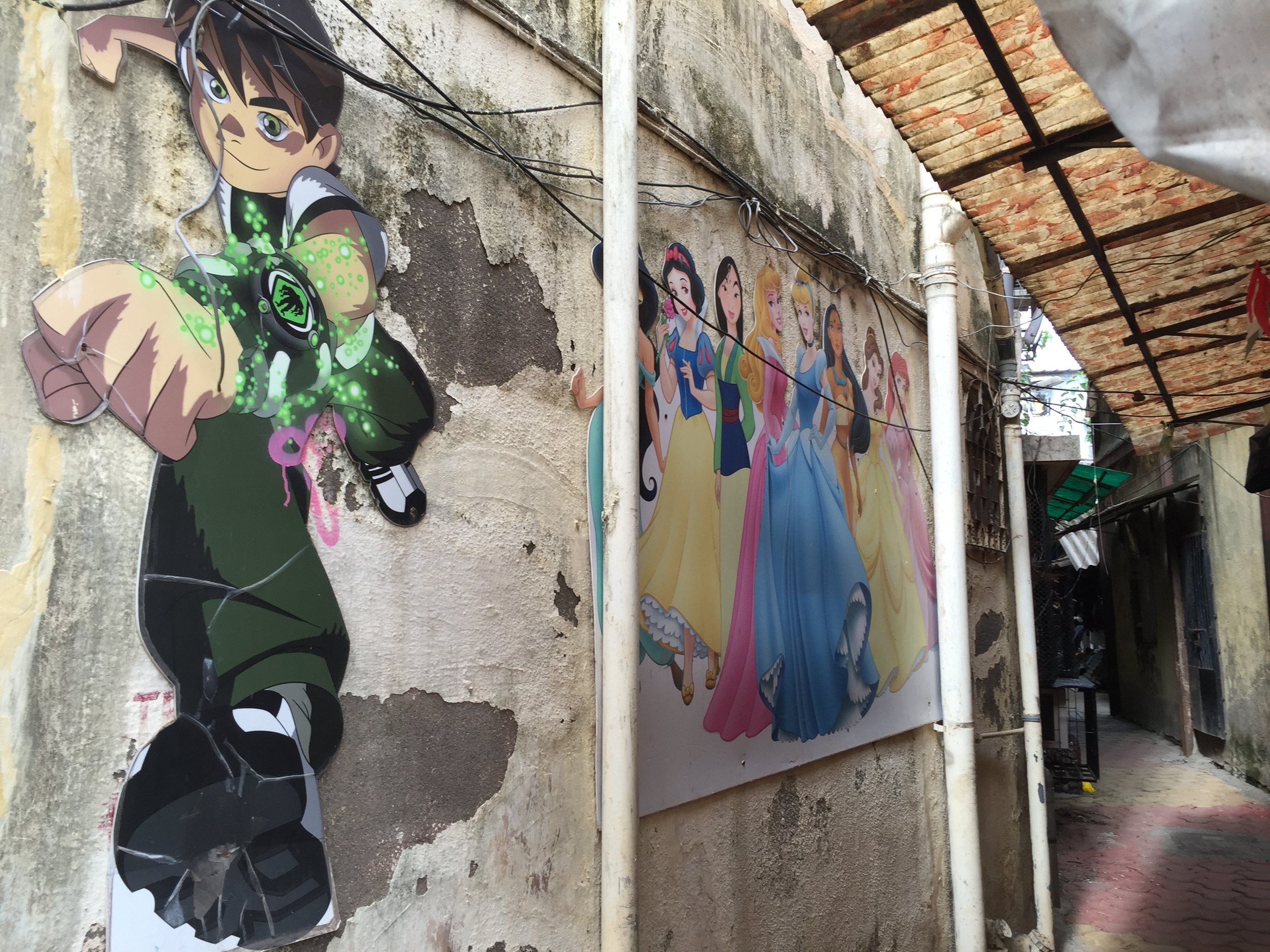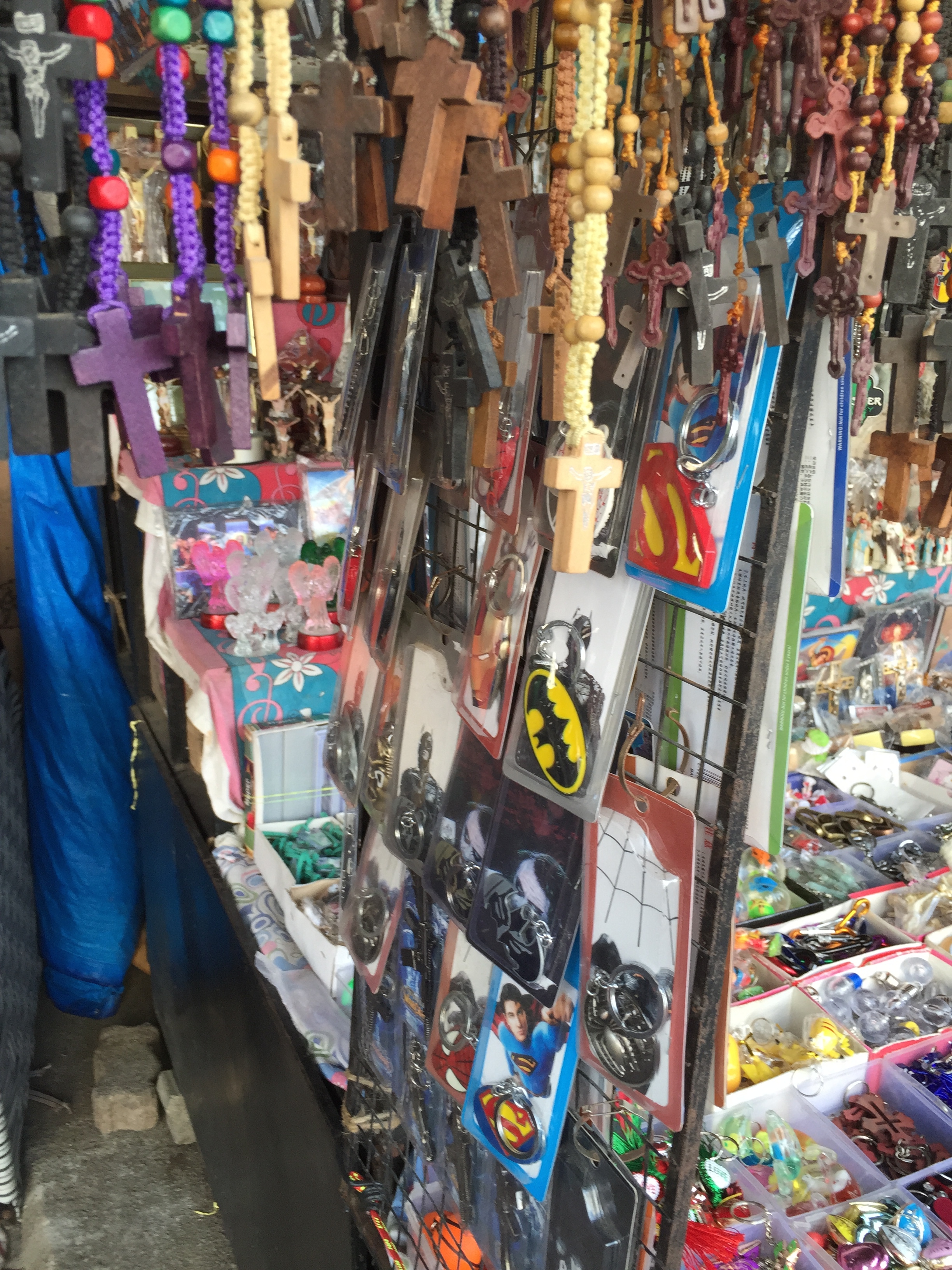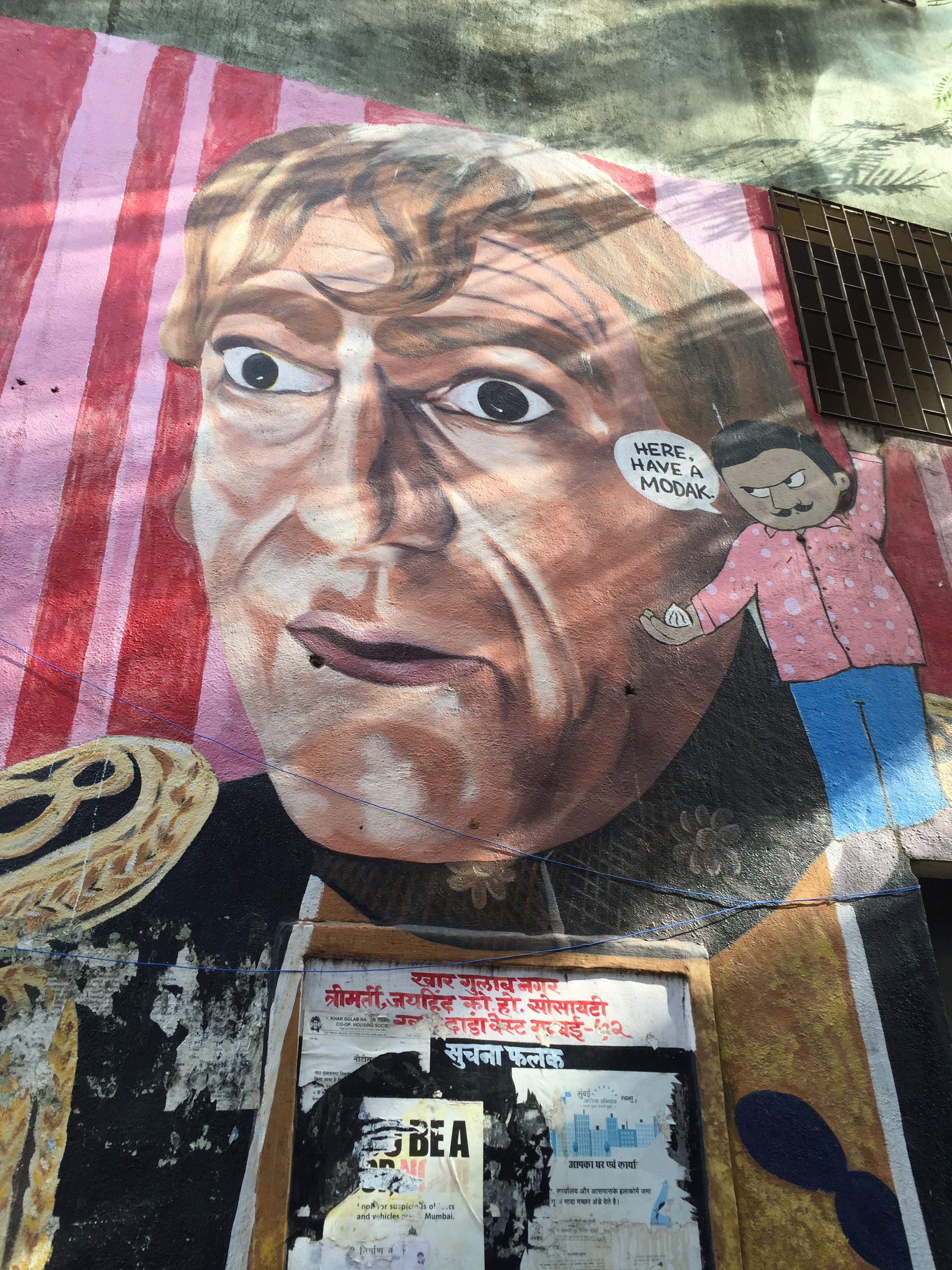India: My First Impressions
/ The following extracts from my travel journal describe the process of discovery and enculturation that occurred when I first arrived in Mumbai. These incidents occurred over roughly the first week of our stay. I have also included here some random street photography taken by Cynthia Jenkins or myself to capture some aspects of life here where seeing is better than reading.
The following extracts from my travel journal describe the process of discovery and enculturation that occurred when I first arrived in Mumbai. These incidents occurred over roughly the first week of our stay. I have also included here some random street photography taken by Cynthia Jenkins or myself to capture some aspects of life here where seeing is better than reading.
We arrived here two days ago. The first day was, as always after such a long flight, spent in a state of utter stupor and I recall very little of it. I could not hold my eyes open and ended up sleeping for many hours. I do retain some blurry impressions of the drive from the airport. Everyone had warned me that Mumbai was an intense and overwhelming city, and after so much mythologizing, I had built up a certain degree of anxiety about what I would encounter here. The ride from the airport covered me in both directions – yes, it was intense and overwhelming but it was also oddly comforting because I did not encounter any deep culture shock or confusion, given my previous experiences in cities like Beijing, Tokyo, Bangkok, and San Paulo. I am still not sure I want to try crossing a street without locals to guide me, but I at least can take in the scope and frenzy of the activity here. And I think I know how to read much of what I am encountering – even if I am relying more on Bollywood movies to process things than might be ideal. And every so often, we encounter signs that are all too familiar – not just Starbucks or Subway, but even Krispy Kreme doughnuts (my personal favorite going back to my Atlanta childhood).
We are staying at a guest house on the Godrej campus -- very nice quarters, definitely a cut above most hotels where I stay. We’ve struggled with some cultural confusion here. We couldn’t figure out how to get hot water into the shower. We took a cold shower the first day but by the second, we were able to communicate with the housekeeper here the issue, and he showed us a switch on the wall in the bedroom which turned on the hot water heater in the bathroom. But, of course, why didn’t I think of that! I am having corn flakes for breakfast most mornings, but was surprised to find that they warm my milk, which makes it a very different dish....
I had a fairly restless night as I continued to adjust to jet lag, and so I was able to listen to the sounds of Mumbai (or at least the sounds of Vikhroli, the neighborhood where Godrij’s headquarters are located) as the city came to life. I could not help but think about the prelude which A. R. Rahman wrote for Bombay Dreams, which I was lucky enough to have seen in London’s West End some years ago.
In this case, the first sounds that really penetrated my sleep was the very faint sound of chanting coming from a nearby mosque. India is at this point a country dominated by its Hindu populations but I have been struck by how pervasive and visible the Moslem minority is here. Second, there was the sound of another wave of rain. We are in the monsoon season and so rain, mostly light, but very persistent, has been a constant since we came here, with only a few rare pockets of sunshine. The rhythm of the rain is constantly shifting. We’ve seen very few moments when the skies opened up and torrent rains fell down, which was more or less what I anticipated from a Monsoon, and many more moments where there was a drizzle or mist or simply a slow pitter-patter of rain on the roof. And then, as the sunlight begins to take hold, you start to hear the crows. There are massive flocks of them here on the campus, and there are times when it feels like we are in a scene from Hitchcock’s The Birds. I don’t know what I expected Mumbai to sound like, but the cawing of crows was not it! But they are loud and raucous and they make sure people hear them for miles around....
We saw so many cultural references to Crows running across Indian media and popular culture once we started to look for them. But Ritesh Mehta, one of my USC students, with whom we corresponded often during the trip, shared this segment from one of his Bollywood favorites.
We spent much of yesterday in Parel, which I understand was an old industrial section of the city – basically an area associated with Mills. Parts of the area has gone through a process of gentrification, so that the old mills have been converted into all kinds of office and residential spaces, preserving just enough of the industrial feel to give atmosphere, and representing some of the most expensive real estate in the city. On the other hand, the housing where the factory workers once lived has remained low income housing, and the offspring of those factory workers still live there. As a consequence, one encounters some of the deep contradictions of how class operates in Mumbai in this community. The working class sections have sprawling low-scale buildings, small shops and stalls, a great deal of visual clutter, and a frenzy of activity. We drove through a maze of winding alleyways to get to the places we were scheduled to visit. I was struck by the informality and intimacy of social interactions we observed through the windows of our car – lots of people walking around arm in arm, many people sitting around barefoot, shop keepers bartering over their wares. There is a density of life here, to be sure, but without romanticizing what I was seeing, there was also a sense of a vibrant public culture that I do not always see traveling through urban areas. I am not sure I can convey what street life is like here – beyond the people, there are many cycles (both motor-bikes and human-powered), there are big red public buses, there are trucks which have individualized, hand-painted, and brightly colored patterns all over them, and there are auto rickshaws which are used as taxis to navigate the narrow, winding streets.
I have been in other places around the world which are known for their dense populations – Shanghai and Tokyo come to mind – but somehow they seemed much more ordered to me, masses of people moving in patterns and flows along the streets, but the streets of Mumbai strike me as more chaotic, with people all moving along their own individual trajectories, and with much more social interactions between them. Certainly we saw some of that street culture when a decade or so ago, Cynthia and I were taken to the tenement communities in Beijing, but the streets of Tokyo have such a sense of everyone in their proper lane, everyone moving towards predestinations, that feel very different from what I have observed here so far....
I spotted a telling display on our drive today. We were once again fascinated with the street life we saw through the windows of our car. In a very low income section of the city, I saw a woman hawking what were either placemats or wall hangings, that were hanging on a clothes line against a wall. About half of the images being sold came from Hindu mythology and the other half were images of Disney Princesses, so you had an image of Sita hanging right next to an image of Cinderella. As we’ve been told many times since we’ve been here, everything is negotiable. And what gets absorbed from outside India gets incorporated into Indian culture in very distinctive ways. One person I spoke with shared a classic summation: “Everything you have ever heard about India is almost certainly true but so is it’s opposite.”,,,
We ended up visiting a ritzy shopping mall in the heart of the city, and as we were wandering around, we found our way into a British toy store. I loved the fact that there were various hands-on demonstrations of various toys and games, such as you see in old movies, but rarely encounter any more in American stores. And then, there he was, right in the center of the store -- Captain America. My first reflect was one of revulsion -- a sense of American cultural imperialism taking over the world, and of all of the icons of American popular culture, this one at this moment seemed the most American. But, at the same time, I had seen very few Americans, very few westerners in my time in Mumbai, compared to almost any other city in the world I have visited before. Is the monsoon season keeping everyone away or is it always this way? And there's suddenly a wave of the familiarity and comfort you get when you encounter a total stranger, but someone from your country or home town, when you are traveling overseas? And so I ran up to him and did the rabbit ear thing for a photograph -- a sign which somehow expresses familiarity and disrespect in one gesture. And it was only then that I noticed the massive Mumbai bus, with the crazy teddy bear behind the wheel, about to run us both over, which somehow sums up my impressions of the traffic flows here. This ended up being the perfect image of my entry into India and one I used in many of my talks here to talk about the ways we adopt popular culture to our own expressive purposes.
We tried to grab a quick bite to eat before plunging into the traffic again to head to our next stop. Parmesh decided to take us to get fast food and we had that Pulp Fiction kind of moment where you find that things that on the surface look just like home have odd little cultural twists as fast food chains localize to the tastes of the host country. So, first, we stumbled on a scene that would have made a world class photograph but would have been too awkward to consider taking. There was a park bench in front of MacDonalds. On one edge of the bench was a mature, stately Hindi woman in a sari and on the other edge was a Muslim woman wearing a full black Burka. In between the two women was a statue of Ronald McDonald with his arms stretched out so that they ran along the full back of the bench. The effect was to see the clown, effectively, putting the move on both of these women. The image worked on so many levels to capture some of the contradictions we felt eating fast food in India.
For a long time, American fast food companies did not really know how to open hamburger chains in a country where there is a strong taboo against eating beef, but gradually they have adopted their menu, so that you can get a wide range of burgers made from various veggie substitutes, and BK is unique in offering a Mutton Burger for those who want to eat meat. The burgers give a good approximation in appearance to our Whoppers, but let’s just say it was not to my taste. Of course not – it’s been adapted to the tastes of Indian customers. But a big part of the pleasure of fast food chains is that the food tastes like home. Another interesting detail: Mickie D delivers here...
We were driving through South Bomaby, along the waterfront, on the way to our first meeting. The traffic bogs down and a woman in a dingy Sari comes out to the car, clutching a toddler in her arms, and tapping on our windows begging for money. We have been told repeatedly that it can be dangerous to give in to such requests, so we are trying to develop thick skins and harder hearts. As I look up through the front of the car, trying to avoid her gaze, we see a horde of other mothers, all similarly dressed, all also carrying their babies in their arms, descending on cars all around us. This helped me to put the issue into perspective.
We paid a visit on a Sunday afternoon to Mount Mary Cathedral, a large Catholic church, in the heart of Bandra.
When we got out of the car, the first thing we encountered were a series of make-shift shops where people could buy wax offerings. I have seen such places outside, say, Notre Dame in Paris, where you could buy candles, and you can indeed buy candles here: not simply white as in Paris but in a range of bright colors. I ended up purchasing a few purple candles to use to pay my respect. But the candles are just the starting point: you can buy wax figurines that represent the things people have come there to pray for, so for those praying for the sick, there are, for example, wax hospitals or clinics but also various organs and body parts. For those who want to do better in their studies, there are schools and textbooks. For those who want to travel, there are wax versions of Indian passports. For those who want success, there are wax versions of piles of Rupees. And for those with relatives in America, there are wax Statue of Liberty figures.
We carried the candles with us into the cathedral, which was huge, and full of people at prayer underneath massive ceiling fans. The walls of the church are decorated with paintings depicting scenes from the New Testament, although the figures are brown and in some cases, wearing traditional Indian clothing (perhaps the counterpart of all of the European-style art we’ve come to associate with some of these same incidents). But, there was no place in the church to light the candles. To do this, we have to cross the street to a huge staircase: we were told that people climb and count the steps to represent the stations of the Cross.
On top, outside, there was a kind of BBQ grill, where you put the candles into leaping flames, and watched them melt. Climbing back down the stairs, we passed by another series of shops. Here, there were all kinds of crucifixes, rosary beads, and depictions of Christ and the Virgin Mary.
But, again, there was something unexpected and a bit confusing: they were also selling in the mix some necklaces depicting the ensignas of Batman, Superman, Spider-Man, and Iron Man. I could not figure out what they might have to do with the church rituals!
We drove around the city a bit more: Parmesh and the D’Silvas showed me the home of some of the largest Bollywood stars. There were a large crowd of people waiting outside the home of Shah Rukh Khan, sometimes called “King Khan” or “the King of Bollywood” because of his rags to riches personal story. He has appeared in more than 80 movies. I found this highlights real on YouTube.
The crowds were gathering, waiting patiently, in hopes that he would stick his head out and say a few words. I have heard much about the devotion of Bollywood fans and the reverential attitudes they have to certain stars. I have been told that in South India, there are temples dedicated to the memory of certain stars who have become emblematic of national/regional pride and spiritual devotion.






































